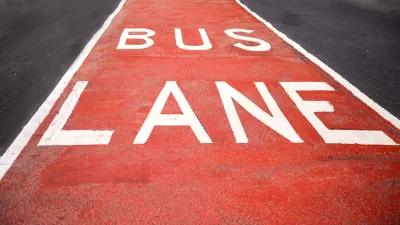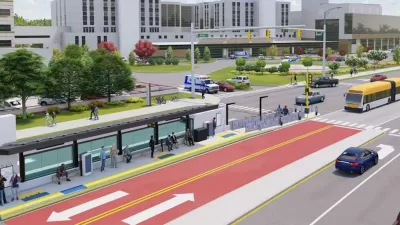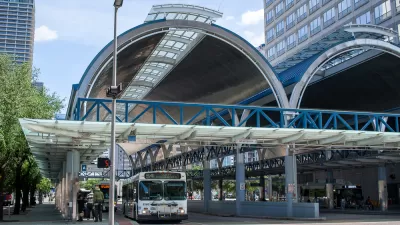The city wants to become North America’s ‘bus rapid transit capital.’
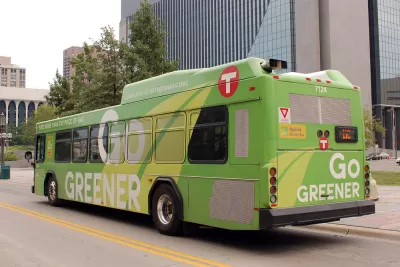
With the opening of its fifth bus rapid transit (BRT) line, Minneapolis is on its way to achieving its goal of becoming “the bus rapid transit capital of North America,” reports Jared Brey in Governing. “In all, the project includes 61 new bus shelters, 78 crosswalk restripings, 24 traffic signal upgrades and 246 electric heaters, which can be turned on by passengers at the press of a button.”
Unlike regular bus service, Metro’s BRT lines only stop at dedicated bus platforms every quarter- to half-mile. Riders pay their fares, before boarding, at well-lit stations with electric heaters and digital signs showing schedules and real-time arrival information. The buses are scheduled to come every 10-15 minutes.
Faster and more reliable than regular buses and cheaper to build than rail, bus rapid transit has seen ridership recover faster than other modes in Minneapolis after losing riders to the pandemic. According to Katie Roth, the director of arterial bus rapid transit at Metro Transit, introducing BRT boosted ridership on the system overall: “other bus lines in the Metro system saw 30 percent increases in ridership when they were switched to BRT, Roth says.”
Metro Transit has six more BRT lines in the works.
FULL STORY: Minneapolis Wants to Be the ‘Bus Rapid Transit Capital of North America’

Planetizen Federal Action Tracker
A weekly monitor of how Trump’s orders and actions are impacting planners and planning in America.
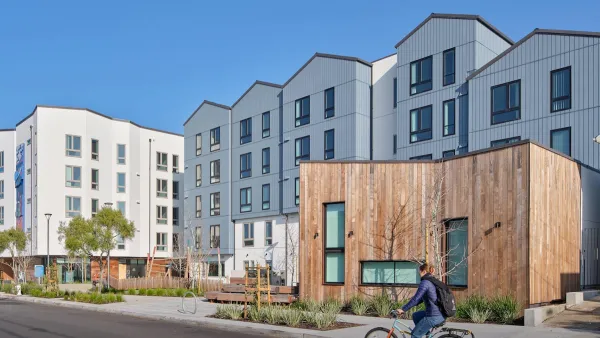
San Francisco's School District Spent $105M To Build Affordable Housing for Teachers — And That's Just the Beginning
SFUSD joins a growing list of school districts using their land holdings to address housing affordability challenges faced by their own employees.
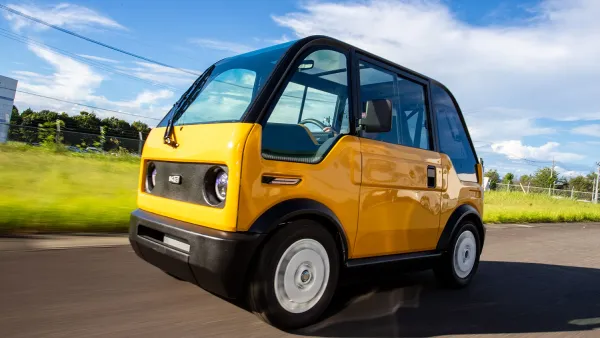
The Tiny, Adorable $7,000 Car Turning Japan Onto EVs
The single seat Mibot charges from a regular plug as quickly as an iPad, and is about half the price of an average EV.

With Protected Lanes, 460% More People Commute by Bike
For those needing more ammo, more data proving what we already knew is here.

In More Metros Than You’d Think, Suburbs are Now More Expensive Than the City
If you're moving to the burbs to save on square footage, data shows you should think again.

The States Losing Rural Delivery Rooms at an Alarming Pace
In some states, as few as 9% of rural hospitals still deliver babies. As a result, rising pre-term births, no adequate pre-term care and "harrowing" close calls are a growing reality.
Urban Design for Planners 1: Software Tools
This six-course series explores essential urban design concepts using open source software and equips planners with the tools they need to participate fully in the urban design process.
Planning for Universal Design
Learn the tools for implementing Universal Design in planning regulations.
Smith Gee Studio
City of Charlotte
City of Camden Redevelopment Agency
City of Astoria
Transportation Research & Education Center (TREC) at Portland State University
US High Speed Rail Association
City of Camden Redevelopment Agency
Municipality of Princeton (NJ)


























